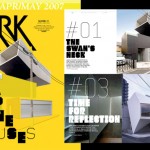 ORDIK 2015 — Mapping Uncharted Territories
ORDIK 2015 — Mapping Uncharted Territories
The 11th Triannual Nordik Committee for Art History Conference
13-16 May 2015
University of Iceland and The Nordic House Reykjavík
Mediating Modern Architecture
SESSION ORGANIZERS:
Mari Hvattum, Oslo School of Architecture and Design.
Mari.Hvattum@aho.no
Mari Lending, Oslo School of Architecture and Design.
Mari.Lending@aho.no
Wallis Miller, University of Kentucky. wmiller@uky.edu
This session studies the emergence of modern architecture by examining the relationship between architecture and new public media in the 19th and early 20th centuries. A marked shift in architectural publication took place in this period in which the treatise was supplemented by
genres capable of efficiently disseminating visual and textual information to a large audience beyond the academies. The session, then, looks at how the new public sphere manifested itself architecturally not only in the form of buildings but also as debates, programs, reactions and negotiations in and over public space, making architecture a key vehicle for what Jürgen Habermas came to call the structural transformation of the public sphere.
FULL DESCRIPTION:
“[M]odern architecture only becomes modern with its engagement with the media” writes Beatriz Colomina in her ground-breaking study Privacy and Publicity: Architecture and Mass Media from 1994. This session studies the emergence of modern architecture by examining the relationship between architecture and new public media in the 19th and early 20th centuries. A marked shift in architectural publication took place in this period in which the treatise was supplemented by genres capable of efficiently disseminating visual and textual information to a large audience beyond the academies. The new public press played a particularly important role in this process, promoting a debate that placed the built environment firmly at the centre of modern public culture. In the early 20th century, newspapers and journals were supplemented by a rich array of popular genres such as ladies magazines and advertisement, presenting both the private home and the public monument as matters of profound cultural importance. Integrating words, images, and buildings – real or imaginary – in entirely new ways, these media contributed to shape a new public discourse on architecture, and to propel architecture into a novel visual culture.
The session invites papers that explore new forms of architectural discourse in the 19th and the early 20th century, looking particularly at how architecture was disseminated in new media and to new audiences. Newspapers, illustrated journals, exhibition catalogues and ladies magazines provided their readers with a rich chronicle of architectural culture and contributed to break the hegemony of classicism by opening up a new and heterogeneous field of architectural expression and deliberation. Furthermore, these media put architecture at the service of an entirely new public; the modern bourgeoisie. The session, then, looks at how the new public sphere manifested itself architecturally not only in the form of buildings but also as debates, programs, reactions and negotiations in and over public space, making architecture a key vehicle for what Jürgen Habermas came to call the structural transformation of the public sphere.
We particularly welcome papers investigating the relationship between words, images and buildings in new public media, and encourage interdisciplinary contributions drawing on fields such as publication history and word-image studies, in addition to architectural and art history. Along with newspapers, magazines, journals, and catalogues, papers might look at photographic albums, travel guides, adult education programs and textbooks. The session invites papers from any part of the world to explore the public mediation of modern architecture in the designated period; an urgent task, it seems, at a time when public space is being rapidly reconfigured, both as a physical structure and a mediated environment.
Please submit a 1–2 page abstract, brief c.v. (two pages max.), and full
contact information by September 25, 2014.
Please direct your communication to the three chairs at the email addresses above and to the
conference organisers at papers.nordik2015@listfraedi.is

Leave a Reply
You must be logged in to post a comment.